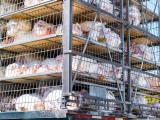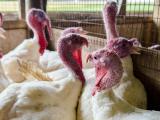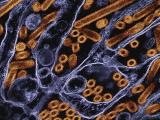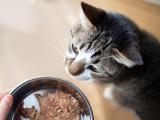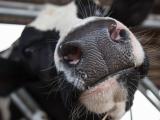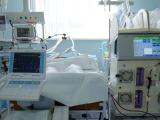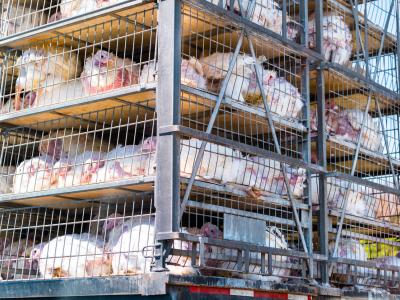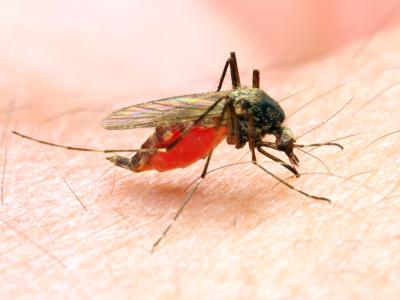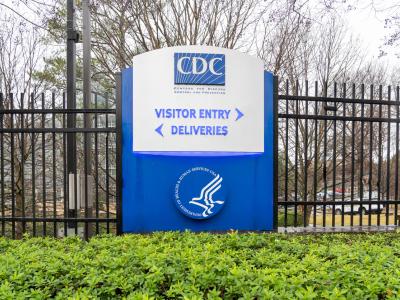Mar 28, 2012 (CIDRAP News) – As researchers from both sides of the debate over two controversial H5N1 studies weighed in yesterday on full publication versus a more cautionary approach, two US journals said they are developing policies to address any future such instances.
Martin Hirsch, MD, editor of the Journal of Infectious Diseases (JID), wrote in an editorial that the goal is to preserve both free expression and security. He said JID, along with its sister publication Clinical Infectious Diseases and the Infectious Diseases Society of America, have closely followed issues raised by the studies.
"We are developing policies that address these issues on a case-by-case basis, so that freedom of scientific expression can be maintained without sacrificing individual safety or national security," he wrote.
He also introduced three new JID perspective pieces that discuss the difficult issues.
The authors include:
- Ron Fouchier, PhD, and colleagues from Erasmus University in the Netherlands, who conducted one of the H5N1 transmission studies
- Two members of the National Science Advisory Board for Biosecurity (NSABB), the US group that reviewed the two studies in December and recommended withholding full details of the published studies
- Nicole Bouvier, MD, an influenza researcher from Mount Sinai School of Medicine in New York who was not directly involved in the transmissibility studies
Publication of the three perspectives pieces comes just days before two key discussions on the two H5N1 studies. Tomorrow and Mar 30 the NSABB will meet again to review the latest versions of the two manuscripts, and on Apr 3 and 4 a Royal Society conference in London will address various aspects of the H5N1 research issues.
The second study is by a University of Wisconsin, Madison, group that did experiments on an H1N1-H5N1 hybrid that they found to be transmissible among ferrets by airborne droplets.
The case for open publication
In the first commentary, Fouchier and his coauthors reiterated that other experts, funders, and external reviewers have been supportive of the need to identify viral factors that affect transmission and contribute to the emergence of pandemic viruses.
They also wrote that the risks to the public and the environment have been reduced "to the absolute minimum." The group said that strict biosafety measures are in place to protect researchers, the environment, and the public, adding that in the remote chance of a human error in the lab setting, workers have access to H5 vaccines and antivirals and can be quarantined if exposed.
The risk of an aerosol-transmissible H5N1 virus to humans is difficult to predict, they said, because virulence may vary in animals and humans and be influenced by a host of other factors, such as dose and virus strain. Though the case fatality rate (CFR) of almost 60% reported by the World Health Organization (WHO) may be a "vast overestimation," more work is needed to get a better handle on the true burden, they wrote.
The group argued against withholding full details of the studies, because they said the techniques to create airborne viruses are well known and not new and there are easier and cheaper ways for bioterrorists to create threats from infectious agents that are more readily available outside of labs. "Censoring the manuscripts on A/H5N1 virus transmission will, therefore, only create a false sense of security," they said.
H5N1 studies that decipher virulence, fitness, host range, and transmission can influence advice on controlling the virus in animals in countries where it is endemic, and the lab-modified viruses themselves can be used to test current antivirals and prepandemic vaccines, the Fouchier group wrote.
Given input from NSABB and WHO experts, it's clear that broader discussions on the topic are needed, they concluded. "We trust that in the interest of public health, the outcomes will be positive and constructive, i.e., that the work will continue and the manuscripts be published responsibly, in the very near future," they wrote.
Key reasons for caution
In a second perspective piece, however, two members of the NSABB detailed the recent history of how the US government has addressed dual-use research issues and explained how the two H5N1 transmission studies met two of the seven classes of experiments that the group had been asked to review: altering the host range of a pathogen and increasing the transmission of a pathogen.
The authors are Michael Osterholm, PhD, MPH, director of the University of Minnesota's Center for Infectious Disease Research and Policy (CIDRAP), the publisher of CIDRAP News, and David Relman, MD, professor of medicine and infectious diseases at Stanford University School of Medicine.
The two noted that they were expressing their own views, and not those of the NSABB.
Osterholm and Relman wrote that, despite recent debates over whether the first-reported virulence of the Fouchier group's H5N1 viruses were misstated or misunderstood, so far none of Fouchier's recent statements have contradicted initial accounts of ferret-to-ferret transmission of the viruses used in the experiments.
Though transmission between ferrets doesn't mean the mutated viruses will spread among humans or other mammals, the possibility can't be excluded, they wrote. Thus, publication of the full study details and access to the complete methods could make it easier for scientists to do reverse engineering and synthesis of a mutant strain.
Intentional or accidental release, even if virulence is similar to current wild-type H5N1 viruses, could boost the number of human cases and pose the threat of reassortment with other influenza viruses, they add.
"The determination by the NSABB that this work not be fullly communicated in an open forum flows from this conclusion and a subsequent risk assessment," Osterholm and Relman said.
Moving forward, the current studies and future research efforts must consider three issues that touch on social and ethical principles, they wrote.
Decisions about research that carries a substantial risk to the public should not be made by life scientists alone, they emphasize. It should include input from scientists who don't have conflicts of interest, including biosecurity experts from outside the life sciences community.
"Furthermore, the public has a right to be involved in this decision process as part of the social contract that balances the privilege of doing scientific research in our communities with the principle of not putting the public in potential harm's way," they wrote.
Also, the two authors rejected claims that the NSABB's recommendation to redact the papers amounted to censorship of scientific research. "In a sense, we all got 'stuck with the results of these studies' at the last minute before publication," they wrote, adding that future dual-use research still needs responsible and effective plans for sharing study methods and results.
"In no way should this 'last minute' NSABB recommendation with regard to these studies be considered a future plan for information control," they state. "We must do better."
Third, Osterholm and Relman wrote that, when considering the principle of doing no harm, it's unclear what the studies' public health benefit is, other than as an example of an evolutionary pathway by which a flu virus can evolve to become a pandemic threat or a strong reminder that H5N1 might one day spark a catastrophic pandemic.
"It now appears that these benefits have already been realized, without the wide dissemination of the studies' methods or results," they added.
New world for research?
Meanwhile, Bouvier wrote that she appreciates the concerns aired by both sides of the debate, though she doesn't necessarily agree with them.
A portion of the discussion has swirled around how dangerous the virus is and what the true CFR could be. "The true CFR is undoubtedly lower than the WHO figure, but it would have to be orders of magnitude lower to provide much comfort, should a bioterrorist or 'garage virologist' create and release influenza viruses as dangerous as these are purported to be," she said.
However, she said concerns about scientific openness raised by the other side of the debate is not just an abstract ideal, but has practical implications that can influence the number of researchers working in vital H5N1 areas such as vaccines and surveillance.
The scientific community lacks objective measures to weigh and predict the risks and benefits, she said. "Where to draw the line between acceptable and unacceptable risk is a subjective assessment, made by individuals with vastly different opinions, values, backgrounds, and beliefs," Bouvier wrote, adding, "Contemporary science is ill equipped to manage these uncertainties."
She said complicating these already difficult issues are realities of conducting nongovernmental research at universities and academic medical centers, which rely on peer-reviewed publications as benchmarks of success that drive grants and faculty positions.
"The publishing of redacted papers in peer-reviewed journals sets an ethically questionable precedent for all, while benefiting few," Bouvier said, adding that biosecurity goals don't always line up with those of scientists.
Descriptions of some of the dual-use research implications have sometimes been inflammatory or sensationalist, which communicates the wrong information to the public and fails to put the significance in context, Bouvier wrote.
Additional experiments could help shed some light on how transmissible the viruses might be in humans, but because the two papers are under embargo, it's not known if the steps were performed, she wrote. "Hopefully they were, but maybe they were not. In academic science, being the first to publish is often more highly regarded than being the most thorough, and this value system is not entirely compatible with the need for caution and diligence in conducting dual-use research of concern."
Bouvier wrote that, unfortunately, this episode may set a regrettable precedent without significantly improving security. She added that though the NSABB has an admirable goal, the means for achieving the goal aren't justifiable, since the methods and data have already circulated, with inevitable leaks to come.
Publishing the studies without complete methods and data would be a devastating precedent, and if it's too late to avert that development, scientists shouldn't give up on trying to resolve the problem until the next controversy erupts, she wrote.
"We must stand up for our ideals, but we must also concede that dual-use research of concern demands of us a high level of responsibility and circumspection, and we may need to consider conducting ourselves and our research in unfamiliar ways," Bouvier concluded.
Hirsch MS. Biosecurity and censorship: the H5N1 influenza controversy. (Editorial) J Infect Dis 2012 Mar 27 [Link]
Herfst S, Osterhaus A, Fouchier R. The future of research and publication on altered H5N1 viruses. (Commentary) J Infect Dis 2012 Mar 27 [Abstract]
Osterholm MT, Relman DA. Creating a mammalian transmissible A/H5N1 influenza virus: social contracts, prudence, and alternative perspectives. (Commentary) J Infect Dis 2012 Mar 27 [Abstract]
Bouvier NM. The science of security versus the security of science. (Commentary) J Infect Dis 2012 Mar 27 [Abstract]
See also:
Mar 26 CIDRAP News story "Fouchier anticipates resuming H5N1 studies soon"
